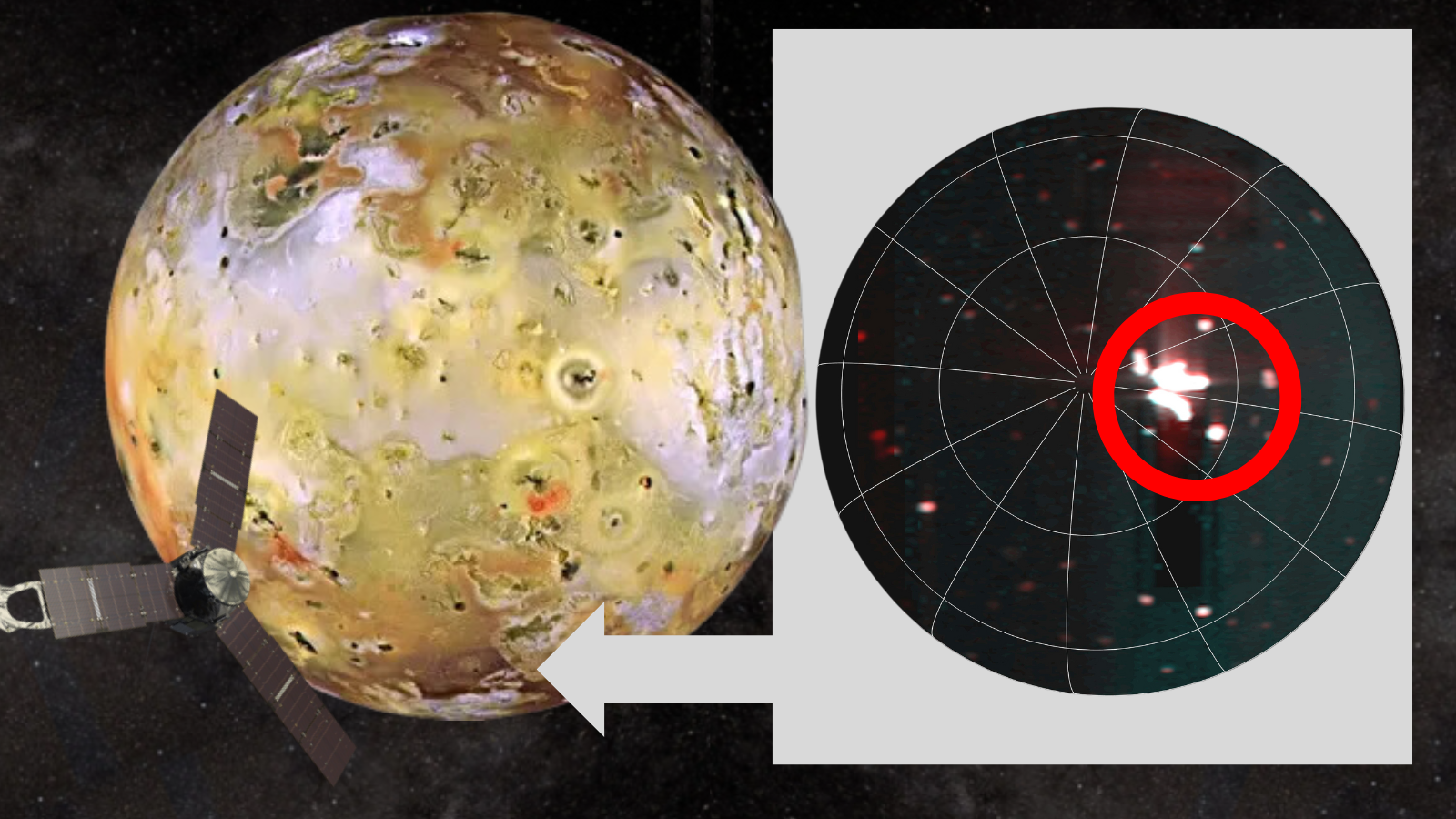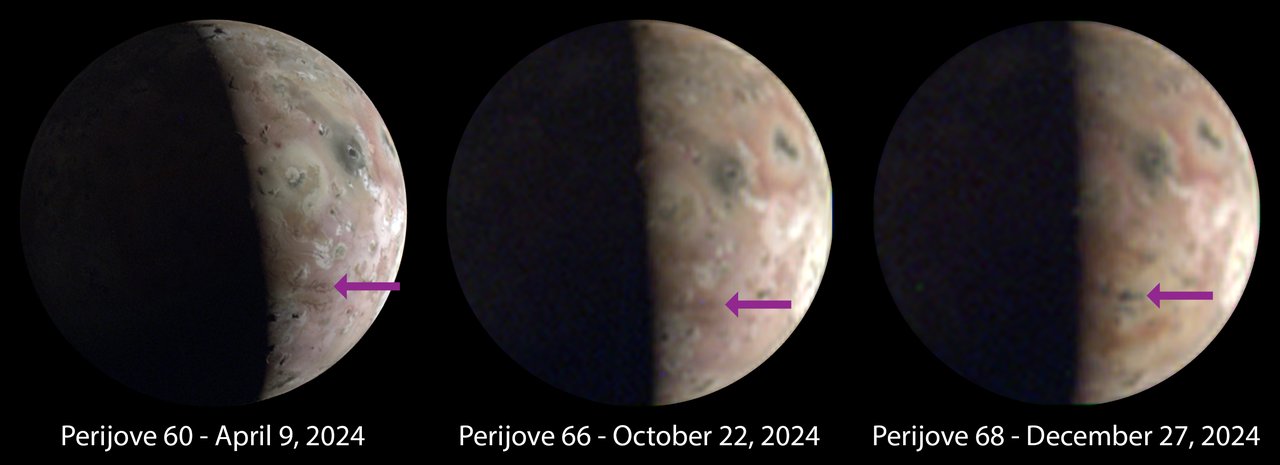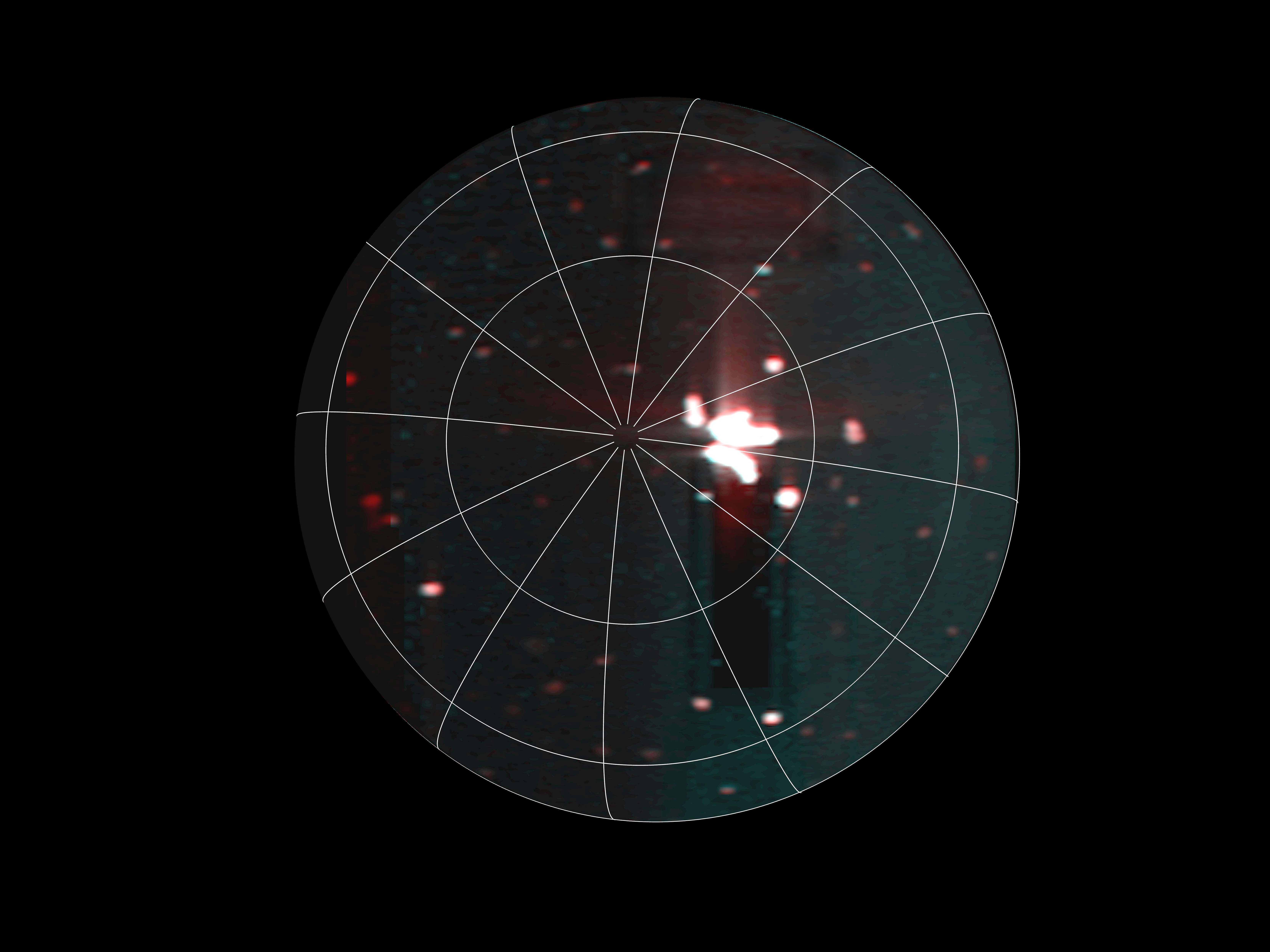NASA's Juno spacecraft watches most powerful volcanic event ever seen on Jupiter's moon Io
"This is the most powerful volcanic event ever recorded on the most volcanic world in our solar system — so that's really saying something."

Even for Jupiter's moon Io, the most volcanic body in the solar system, a recent volcanic event witnessed by NASA's Juno spacecraft takes the biscuit.
The event was just one eruption centralized in a newly found hotspot region of Io estimated to be larger than Lake Superior on Earth. The currently unnamed region is so powerful that the energy it belts out is equivalent to six times the energy produced by all of Earth's power plants combined.
The team behind these findings used data collected by Juno, which made flybys of Io in Dec. 2023 and Feb. 2024 and came to within about 930 miles (1,500 kilometers) of the Jovian moon's surface. In particular, the large volcanic hotspot was observed when Juno made its latest Io flyby on Dec 27, 2024, coming to within 46,200 miles (74,400 kilometers) of Io's surface and targeting the moon's southern hemisphere with its infrared instrument.
"Juno had two really close flybys of Io during Juno's extended mission," the mission’s principal investigator, Scott Bolton of the Southwest Research Institute, said in a statement. "And while each flyby provided data on the tormented moon that exceeded our expectations, the data from this latest — and more distant — flyby really blew our minds.
"This is the most powerful volcanic event ever recorded on the most volcanic world in our solar system — so that's really saying something."
How Jupiter torments Io
The reason Io is so volcanic is in large part due to its parent planet, Jupiter, the solar system's largest world.
As Io orbits the gas giant planet once every 42.5 hours, the immense gravity of Jupiter generates powerful tidal forces with the Jovian moon. This squashes and squeezes Io, causing friction-related heating in the moon's interior. As a result, molten lava erupts onto the surface of Io via the 400 or so volcanoes that the moon is covered with. This lava brings along plumes of gas and ash that fill the atmosphere of Io.
Furthermore, with eruptions of lava comes blistering heat, which Juno can see from space as infrared light using its Jovian Infrared Auroral Mapper (JIRAM) instrument. JIRAM allows scientists to gather data from the "weather layer" of Io around 30 to 45 miles (50 to 70 kilometers) below the cloud tops of the Jovian moon's southern hemisphere.
Get the Space.com Newsletter
Breaking space news, the latest updates on rocket launches, skywatching events and more!

This led to the discovery of a hitherto unknown region of Io that's subject to extreme volcanism across 40,000 square miles (100,00 square kilometers).
"JIRAM detected an event of extreme infrared radiance — a massive hot spot — in Io's southern hemisphere so strong that it saturated our detector," Alessandro Mura, a Juno mission investigator from the National Institute for Astrophysics in Rome, said in the statement. "However, we have evidence what we detected is actually a few closely spaced hot spots that emitted at the same time, suggestive of a subsurface vast magma chamber system.
"The data supports that this is the most intense volcanic eruption ever recorded on Io."

Juno didn't just capture this turbulent region in infrared, either. The spacecraft's JunoCam visible light instrument also pictured the region.
This allowed the team to compare what the region looked like in this latest flyby to how it appeared in images captured in two previous trips past Io. They found changes in surface coloring around the region that are associated with volcanic activity and developing hot spots.
Juno will make another flyby of Io on March 3, 2024. That will allow the team to see what kind of landscape changes have developed in the region.
Eruptions of size and ferocity are associated with a variety of long-term characteristics. Other massive eruptions on Io have left in their wake fingerprints like rock fragments spewed out by volcanoes, small lava flows from fissures and volcanic- deposits rich in sulfur and sulfur dioxide.
"While it is always great to witness events that rewrite the record books, this new hot spot can potentially do much more," said Bolton. "The intriguing feature could improve our understanding of volcanism not only on Io but on other worlds as well."
Join our Space Forums to keep talking space on the latest missions, night sky and more! And if you have a news tip, correction or comment, let us know at: community@space.com.

Robert Lea is a science journalist in the U.K. whose articles have been published in Physics World, New Scientist, Astronomy Magazine, All About Space, Newsweek and ZME Science. He also writes about science communication for Elsevier and the European Journal of Physics. Rob holds a bachelor of science degree in physics and astronomy from the U.K.’s Open University. Follow him on Twitter @sciencef1rst.
